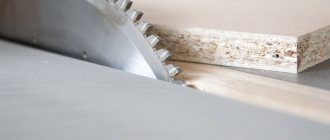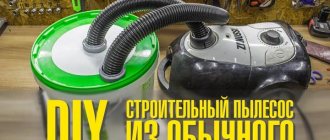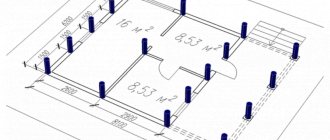People just starting to burn portraits have a question: “How to cut plywood so that there are no chips?” Typically, this difficulty arises when cutting plywood across the grain. Then the top layer of veneer breaks off and forms chips and burrs. The most unpleasant thing is when this happens when sawing off extra empty fields on a finished burnt work. Chips can appear for several reasons and most often cannot be corrected or disguised. Below in the article we will look at the reasons for the appearance of such chips and burrs. We’ll also consider what to do to prevent chips from appearing next time.
Causes of chipping
Often chips appear because a jigsaw blade that is not suitable for these tasks is used. If you take a saw blade with teeth pointing upward, then such a saw will tear off the top layer of veneer. This happens because there is space between the jigsaw blade and the file. The fracture of the top veneer occurs precisely in this place.
What to do to get rid of chips:
- Disable the pendulum stroke on the jigsaw
- Use a suitable quality file
- Always cut plywood from the rough side
- Buy a splinter guard (or make one yourself)
- Additionally, choose a method that is convenient for you from the “clean cut” experiment
Let's look at all the points in more detail in this article.
Carving techniques for beginners
Organization of the workplace is important. The master must work while sitting in a comfortable position, without bending or reaching with his hands to the place of work. For small parts, a sawing table is used.
They are on sale. But to gain first experience, it is better to cut it out with your own hands from a piece of thick plywood or board according to the following drawings:
The table is attached to a large work table with a clamp or self-tapping screws.
In some cases, it is more convenient to clamp the workpiece vertically with a clamp, then you will have to cut not from top to bottom, but horizontally, which is more convenient.
Pendulum stroke of jigsaw
The pendulum stroke, or otherwise called “pumping,” is needed to increase the speed of cutting wood, to be able to work with soft materials and to produce complex cuts. The pendulum stroke of the jigsaw is carried out according to the principle of swinging. It significantly worsens the quality of the cut and because of this, chips appear on the surface.
We recommend turning off the pendulum stroke to reduce chipping. For example, on a Makita jigsaw they showed where it turns off. Find out if your jigsaw has such a function and how to disable it. When the function is turned off, the jigsaw makes standard movements, due to which uniform sawing is achieved and the quality of the cut is improved.
Marking the cut line
To cut the material evenly with a jigsaw, you need to correctly mark the cutting line and securely fix the workpiece on the surface. If you have to work with a long blade, you should use a flat rail as a guide and two clamps to secure it and the working material. It is necessary to act in a certain sequence.
First you need to make markings on the chipboard using a ruler. To do this, the required distance is measured on both sides, the marks are connected, forming a cut line. To make a curly line, it is advisable to draw it on paper and then transfer it to wood using carbon paper, having previously sanded the surface.
To cut a circle with a jigsaw, markings are applied with a construction pencil or black marker to the surface using a pre-made stencil made of thick paper or cardboard. In this case, cutting the material begins by drilling a hole in the center. The blade should move from the center to the marking line, and then along the perimeter of the circle.
Important! A jigsaw is inherently designed for curved cuts; cutting it exactly in a straight line is quite difficult. You must constantly monitor the line and point the tool slightly to the side.
To avoid chips on the finished surface, the file during work is not guided along the mark, but near it. The laser guide on the jigsaw will help you cut smoothly.
Jigsaw blades
If you have previously worked with a jigsaw, then you know that if you use the wrong saw, you can ruin the top layer of the material, especially for layered material. Plywood is a layered material - it is wood veneer glued together.
In this section we will look at how saw blades affect the quality of the cut and what types they are in principle.
Files come in different tooth sizes and shapes, the length of the file, the material for which they are intended, the direction of the tooth, the material from which the file is made and for what purpose it was developed. For example, a blade with a large tooth is designed for cutting wood at high cutting speed for rough cuts. And files with shorter teeth will make a more even cut. Thin (narrow) files make it possible to cut radius and other non-standard shapes, while wide ones help to maintain a straight cut.
The letters “A, B, C, D” indicate the size of the teeth, the letter “A” indicates that the saw has the smallest teeth.
The numbers indicate the length of the file 1, 2, 3, 7, the length of the blade, the longer the file, the thicker the material it can cut.
For example, the marking of Bosch brand files looks like this:
In addition, files also differ in cutting edge geometry.
An engineer’s personal experience about jigsaw files:
In production, there are tasks both for an even saw when working with finished portraits, and the need to unravel a large sheet of plywood, when speed is required and quality is not so important. The majority of sawing blades are designed for speed, not quality of cut. And even files with a medium tooth will scratch the surface of the material, i.e. spoil the top layer of plywood. Not so much compared to larger tooth files. Therefore, the engineer adapted himself to using metal files with fine teeth up to 1 mm for even cutting of plywood. When working with such a file, the speed suffers greatly and these files become very hot. But when important cutting work is needed, the time spent is justified. An engineer uses such saws when he needs to work on a portrait that has already been burned out.
Cutting technology
They begin sawing after securing the workpiece and applying markings. To do this, you need to turn on the jigsaw, set the maximum speed level and adjust the pendulum stroke by setting it to number 1.
You need to bring the file to the marking line, press the side of the platform against the guide and start working. When moving the jigsaw forward, you need to monitor the location of the platform. Do not deviate from the guide. When there are a few centimeters left to the end of the canvas, you need to carefully hold the free edge, avoiding breaking. At this point the process can be considered complete. To prevent the cut from turning out crooked, it is worth remembering a number of nuances:
- During operation, do not press too hard on the electric jigsaw, otherwise the file will break;
- when cutting a steel sheet, you need to choose a tool with maximum power and work at high speed - when heated, the steel softens and becomes more pliable;
- When processing plastic, laminate, organic glass or stainless steel, it is necessary to provide additional cooling for the file and periodically take breaks so that the tool has time to cool down;
- to prevent the plastic from melting during processing, it is necessary to set the minimum speed with a frequency of 1000 rpm;
- the figured cut will be smooth if you choose a narrow file with small teeth;
- After finishing the work, the electrical device should be cleaned of sawdust and placed in a special case.
Professional builders advise adhering to certain rules to help avoid mistakes that will not be easy to correct.
When choosing a file, you need to start from the material you are working with: plastic, thin or thick metal, plywood, solid wood. You should prepare in advance all additional items that may be needed during the cutting, marking and fastening process. Particular attention should be paid to fixing the material to the surface.
Note! To avoid defects, the canvas should be positioned face down.
It is best to try the sawing technique in advance and practice cutting with a jigsaw on unnecessary workpieces, because a crooked line will be difficult to correct. Safety precautions should not be neglected; you should use safety glasses and wear gloves when sawing.
If these recommendations are followed, the process of cutting parts should not be accompanied by unforeseen difficulties.
Sawing from the rough side
The fact is that standard files have teeth away from the jigsaw (unlike files with the opposite tooth). These saws “eat” the wood as they move from bottom to top. When a tooth catches on the top layer of veneer, it often splits and chips appear. This often leaves the underside with a very good edge. From this, the craftsmen made a simple conclusion that to get a clean saw, it is enough to turn the plywood upside down and saw from the “wrong” side. The method gives the best results, so feel free to use it.
What it is?
A jigsaw file is a blade equipped with teeth of one type or another, fixed at one end to the movable rod of the tool. Since all materials have their own properties and characteristics, a large number of varieties are produced. They are designed to solve various problems, cutting certain materials. As a rule, craftsmen purchase sets of several types of cutting tools.
Selection criteria may be:
- The most popular and common types of cutting.
- Purpose for a particular material.
- Creation of a universal set that allows you to perform most types of processing.
Separate, specialized samples are also available for sale. They are purchased to perform specific work according to previously known parameters of the material and cutting conditions. The choice of file type is determined by the user’s level of training, experience and knowledge. In order to avoid mistakes and choose the best option, you should study the features and characteristics of the cutting tool.
Anti-splinter liner
This is a special pad for a specific brand of jigsaw. It is simply inserted between the jaws of the jigsaw and is not secured in any way. The insert is adjacent to the file, so it does not allow the pile of the top layer to rise (which is what causes chips), so the saw is smooth. Craftsmen advise using files from the same manufacturer as the jigsaw - the quality of the cut will be better with the use of an insert.
The inserts are sold in sets of 3-5 pieces. They are not eternal - they have to be changed periodically.
For example, an insert for a Bosch jigsaw costs about 400 rubles.
If you haven’t found an insert for your jigsaw or don’t want to buy one, then there is a small life hack from the craftsmen - stick ordinary tape in the place where you will be sawing. After this, you need to iron the tape well with your fingernail. Then saw directly on top of the tape. After that you delete it. The result will be similar to the liner.
You can also make such a sole yourself. Here is an example of how our client made a jigsaw pad from a thin sheet of tin.
But it is more convenient to make such a platform from a sheet of plexiglass. And stick it to the bottom of the jigsaw using double sided tape.
With a homemade insert you will also get a clean cut.
Thick Metabo files
Metabo also marks its files with a digital code. But the Metabo digital code is not informative. And on the packaging they do not provide compliance with Bosch codes. So you need to open the Metabo website and look at the characteristics of the file by number - there is information on the thickness of the files.
And on the website, for most of its files, Metabo indicates compliance in Bosch encoding. Metabo website.
Metabo has the thickest files: 1.5 mm and 1.7 mm. Here are their codes:
- 623999000 CLEAN WOOD PREMIUM, tooth pitch 2.2 mm, thickness 1.5 mm
- 623998000 CLEAN WOOD PREMIUM, tooth pitch 2.2 mm, thickness 1.5 mm
- 623977000 CLEAN WOOD PREMIUM, tooth pitch 3 mm, thickness 1.5 mm
- 623679000 PRECISION WOOD, tooth pitch 4 mm, thickness 1.7 mm
Using masking tape
Before sawing, you can glue masking tape to the plywood, then the cut will be cleaner. It is better to use masking tape rather than regular tape. It does not leave sticky residue on the plywood and is easy to remove. Make sure the tape is well attached before cutting.
This method isn't that bad. But personally I don't like this method.
Firstly, the tape often comes off when sawing and chips appear in these places.
Secondly, if you want to saw off plywood on which a picture made on a Pyroprinter has already been burned, there is a risk that small details of the image will remain on the masking tape.
Sawing on machines
The easiest way to cut laminated chipboard without chipping is to use the services of the store where the material is purchased. Many large chain stores such as Leroy Merlin have sawing machines that cut the slab very accurately to the given dimensions. The end is perfectly smooth, and the edge can be glued to it without difficulty.
But! Even before going to the store, you will need to decide on the parameters of the future design, make a drawing and make a list of all the parts indicating their sizes.
Source akson-quick.ru
Such equipment makes only straight cuts, but can cut an edge not only vertically, but also at an angle of 45 degrees for a miter joint.
Sawing, using second plywood
Another way to get a very clean cut is to lay another sheet on top of the sheet of plywood you want to cut and clamp them together using clamps. The top sheet of plywood will prevent chips from forming on the bottom sheet of plywood.
The result is a clean and neat cut, no chips on the desired sheet of plywood. But the main disadvantage of this method is the large overuse of plywood.
Fastening material
In order for the cutting line to be smooth, the working surface must be as stable, rigid and durable as possible. When working at home, this can be an ordinary table with reliable legs and a flat tabletop.
The board is fixed to the surface using clamps secured on both sides with moderate force. The sheet to be processed must be positioned in such a way that the tool does not rest against the surface during operation. To prevent pressure from being applied to the saw during the cutting process, you can weigh down the protruding edge hanging from the surface using an attached weight.
Trimming with a construction knife
There is also a way to trim the site of the future cut with a construction knife. This way you will cut the top layer of veneer and it will break at the cut point and not beyond. To trim, use a metal ruler to make a straight line. The cutting width is usually 3 mm.
The result is pretty good. I use this method often. If, when sawing, I just need to cut off a piece of plywood and throw away the second part, then I make only one cut - on the finishing side. This option is good to use when cropping a portrait.
Varieties of cutting edge geometry
All files differ in the size of the teeth, the pitch between them and the setting (deviation in different directions).
Milled, classic layout
These are teeth cut out on the canvas by milling with a regular set. One tooth is deviated to the left, the next to the right, etc.
It is called classic or traditional because the teeth on all hand saws, two-handed and sawmill saws, etc. are set in exactly the same way.
With this cut, the cut is wider than the blade. Therefore, clamps are eliminated, sawing is easier, and sawdust ejection is easier.
Milled, wavy layout
It also provides a wider cut than the blade, just like a classic routing. The difference is that the deviation in different directions is not just one for each tooth, but wave-like for several. “Waves” enter the material more smoothly, with less resistance.
Polished, classic layout
The geometry of the teeth of such files is the same as that of the milled ones described above. The difference is that after cutting and setting, the teeth undergo grinding, during which they are sharpened and acquire a smooth surface. Due to this, friction is reduced and sawing is accelerated, the cut is cleaner, and there are fewer chips of the material.
Conical grinding, without routing
The file has an even row of polished, sharpened teeth. In this case, the shape of the teeth is such that the cut is slightly wider than the blade and without setting. Provide precise, even and neat cuts on various materials.
Conclusion:
To get the perfect cut
- Choose a suitable fine-tooth file. You can take files for metal or laminate. Do not use saws to quickly cut wood.
- Disable pendulum mode, if available.
- If possible, fit a splinter guard or make a solid sole for the jigsaw.
- Saw the plywood from the back side so that chips do not appear on the side of the portrait
- Use masking tape to make the cut cleaner or other life hacks
Features and Recommendations
Experts and experts advise performing this kind of work using electric jigsaws simply because a regular hand saw is too rough. It does not allow cutting the material evenly enough. The correct sequence of steps is:
preparing tools (ruler, jigsaw, measuring tape, awl or other sharp device for drawing on chipboard);
supplementing these tools (if necessary) with a square for laying right angles;
measuring the required part (with a reserve of 0.2 cm so that it can be adjusted);
drawing a line along a ruler;
actually, cutting along the laid line;
refining the cut area using sandpaper;
if the quality of the end is very poor, rub it with chalk, similar in tone to chipboard.











